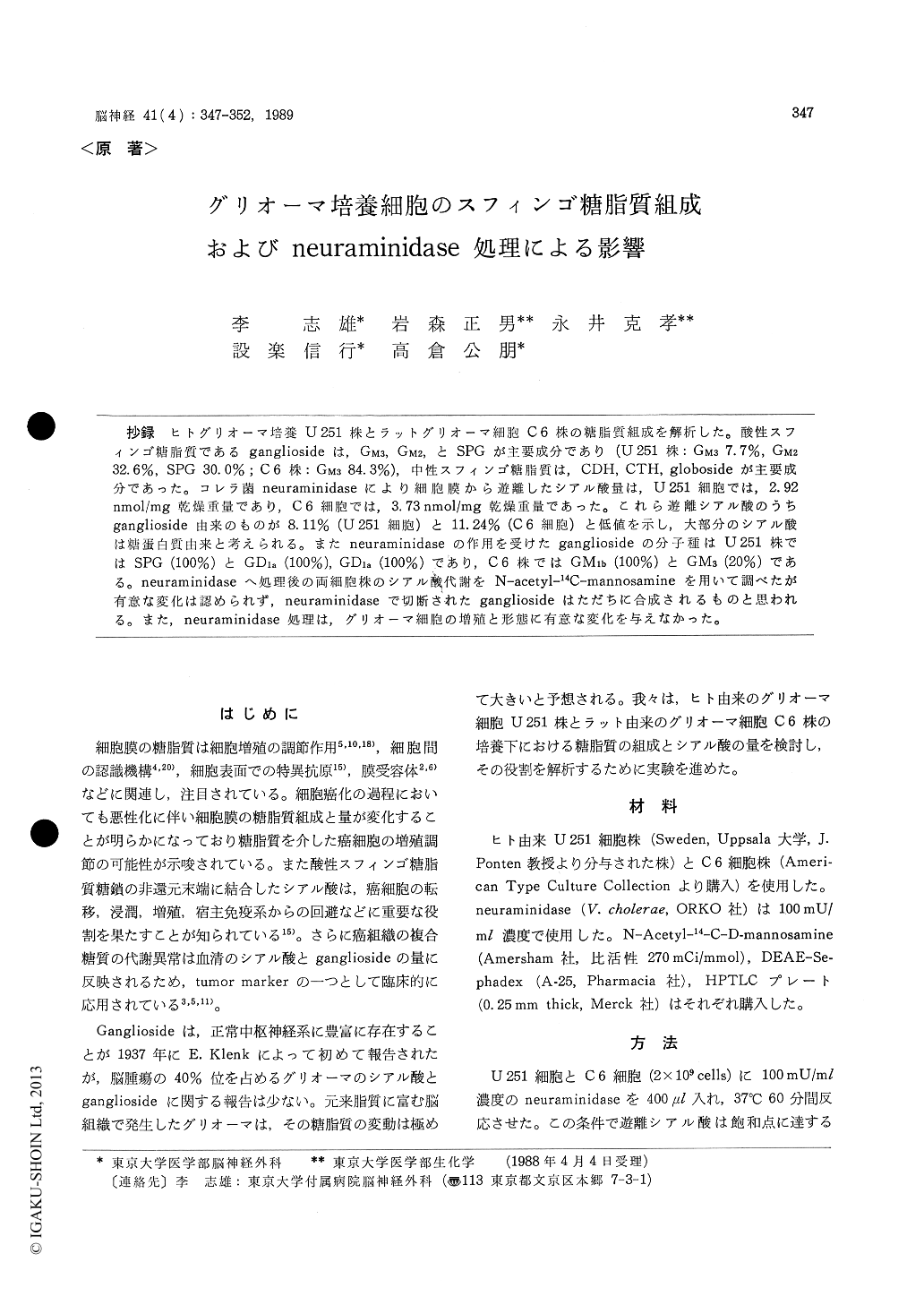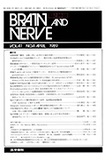Japanese
English
- 有料閲覧
- Abstract 文献概要
- 1ページ目 Look Inside
抄録 ヒトグリオーマ培養U251株とラットグリオーマ細胞C6株の糖脂質組成を解析した。酸性スフィンゴ糖脂質であるgangliosideは,GM3,GM2,とSPGが主要成分であり(U251株:GM3 7.7%,GM232.6%,SPG30.0%;C6株:GM3 84.3%),中性スフィンゴ糖脂質は,CDH,CTH,globosideが主要成分であった。コレラ菌neuraminidaseにより細胞膜から遊離したシアル酸量は,U251細胞では,2.92nmol/mg乾燥重量であり,C6細胞では,3.73nmol/mg乾燥重量であった。これら遊離シアル酸のうちganglioside由来のものが8.11%(U251細胞)と11.24%(C6細胞)と低値を示し,大部分のシアル酸は糖蛋白質由来と考えられる。またneuraminidaseの作用を受けたgangliosideの分子種はU251株ではSPG (100%)とGD1a(100%),GD1a(100%)であり,C6株ではGM1b(100%)とGM3(20%)である。neuraminidaseへ処理後の両細胞株のシアル酸代謝をN-acetyl−14C-mannosamineを用いて調べたが有意な変化は認められず,neuraminidaseで切断されたgangliosideはただちに合成されるものと思われる。また,neuraminidase処理は,グリオーマ細胞の増殖と形態に有意な変化を与えなかった。
The composition of glycosphingolipid on human cultured glioma cell line U 251 and rat glioma cell line C 6 was analysed by high performance thin layer chromatography. As a result, the major gangliosides were simple gangliosides such as GM3 (U 251 : 7. 7%, C 6 : 84. 3%), GM2 (U 251 : 32. 6%) and SPG (U 251 : 30. 0%) on glioma cells whereas the major neutral glycosphingolipids were CDH, CTH and globoside. After treatment with neura-minidase 2. 92 nmol/mg dry weight and 3.73 nmol/mg dry weight of sialic acid were freed from U 251 cells and C 6 cell, but only 8. 11% (U 251 cell) and 11.24% (C 6 cell) of these sialic acids originated from glycolipid, and thus the major part of sialic acid might be released from glycopro-tein of the cells. The gangliosides that react to neuraminidase are SPG, GD.t. and GDib in U 251 cells and are GMla and little GM3 in C 6 cells. The biolabelling study using N-acetyl-14C-manno-samine as a precursor of sialic acid demonstrated that the precursor was mainly incorporated into both or either of GM3 and SPG in the acidic glycolipid fraction. In addition, no significant chan-ge on proliferation and morphology of glioma cells after neuraminidase treatment was observed in this study.

Copyright © 1989, Igaku-Shoin Ltd. All rights reserved.


